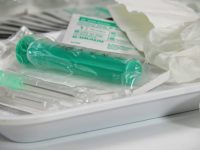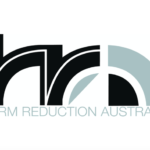Drug Consumption Rooms: Minimising Harm to Users and the Community

Over the last decade, patterns of illicit drug use have changed around Australia. In 2001, when the Uniting Medically Supervised Injecting Centre (MSIC) was established in Kings Cross, there was an epidemic of heroin overdoses in the local area. But today, the Sydney streets are awash with ice and the majority of people using it are inhaling vapours, rather than injecting the drug.
So while leading drug reform advocates are continuing their campaign for more facilities like the MSIC to be set up around the country, they’re also calling for a broadening of the scope of such centres. They argue drug consumption rooms (DCRs) should be equipped to deal with people who inhale drugs, as well as those who inject them.
Those leading the campaign
The two harm reduction veterans leading the push in NSW are Dr Alex Wodak and Matt Noffs. Dr Wodak is the president of the Australian Drug Law Reform Foundation. In 1986, he established the first needle syringe program in the country, which led to Australia having some of the lowest rates of HIV amongst people who inject drugs in the world.
Noffs is the chief executive of the Noffs Foundation, the country’s largest provider of drug and alcohol treatment for people under 25. He’s recently authored the book Breaking the Ice, which calls on the nation’s authorities to deal with the use of the ice drug in Australia as a health issue, rather than a criminal one.
The success of DCRs in Europe
The pair recently went on a research mission to Switzerland and Germany to see the harm minimisation programs these nations have in place. In 1986, the world’s first DCR was set up in Bern, Switzerland. It was a centre where drugs could be injected under supervision.
But as it became popular to inhale a combination of heroin and cocaine in the city, health officials requested that authorities allow for drug inhalation at the centre. When they refused, the Swiss police advised authorities it was necessary, and the facility’s services were broadened.
Today, there are 90-odd DCRs around the world that mainly cater for those who inject drugs. They’re found in around 10 countries in more than 60 cities. And there’s never been a fatality from an overdose in any of these facilities.
Noffs has suggested sites for a new Sydney DCR at the Randwick and Liverpool branches of the Noffs’ treatment centres. But Dr Wodak stressed to Sydney Criminal Lawyers® that there’s a much greater need countrywide. He said about 15 DCRs should be set up across Australia, “mainly in large cities, but also in some larger regional cities.”
How the new DCRs would operate
Dr Wodak explained that the new DCRs should operate like the MSIC, but not only should they accommodate people who inject drugs, they should also cater for people who inhale them. “The drug market is changing and the community’s response needs to respond to those changes and changes that may come in the future,” he said, adding that they should not only cater for inhaling ice, but also “any other drug vapour.”
So a proposed new DCR in Sydney would provide clean pipes and smoking equipment, along with access to drug treatment programs. And this is something many detractors of such facilities don’t seem to understand. A key role they play is providing access to healthcare and mental health services to some of the most marginalised members of the community. At the MSIC, over two-thirds of those who regularly attend the facility have accepted offers of assistance.
But NSW assistant health minister Pru Goward is adamant the government does not support a drug consumption room that caters for people who take ice, and there are no plans to open such a facility. She also recenlty refused to guarantee the future of the Kings Cross MSIC.
Support for DCRs
However, there’s a lot of support for the establishment of DCRs from prominent members of the community. “We get a lot of support from senior police, especially if they have had a lot of experience trying to police illicit drugs,” Dr Wodak said. Former Australian Federal Police commissioner Mick Palmer supports the facilities, and has said many police would share his view privately. He said it’s time to trial new options, as they’ve been shown to work elsewhere.
Former NSW premier Bob Carr wants services like the MSIC broadened to include inhaling ice. Carr initially opposed the Kings Cross facility, but after listening to the arguments, he changed his mind and approved it. And on his retirement, he listed the centre as one of his top ten achievements.
Former Victorian premier Jeff Kennett is now a leading advocate for establishing a safe injecting facility in his state. His support is based on the evidence he gained on a visit to the Sydney MSIC early last year. Studies have shown that in the first ten years of its operation there were only gains in the Kings Cross area. Ambulance call-outs were down by 80 percent, public injecting and discarded syringes had halved and there was no increase in drug-related offences.
According to Dr Wodak, the various tiers of government will eventually understand that DCRs are needed. He believes local governments in capital cities will be the first to establish the facilities, and this will lead to acceptance from state and territory governments. “It’s not so much a matter of what we will do or not do,” he said. “It’s a matter of what the worst affected communities will do.”
Civil disobedience has worked in the past
In the past, it’s taken acts of civil disobedience to get such controversial strategies underway. In 1986, Dr Wodak set up an illegal pilot needle syringe program. The NSW Department of Health told him to close it down. But on a subsequent meeting with NSW police, a senior detective said they wouldn’t press charges, in light of the evidence he’d provided. And soon, the NSW government legalised the program.
In early 1999, an injecting room was set up in the Wayside Chapel in Kings Cross. Although police closed the room down, the publicity forced the issue onto the agenda of the 1999 NSW Drug Summit, which eventually led to the establishment of the MSIC. And in 1986, the first drug consumption room in the world – pioneered by Swiss psychiatrist Dr Robert Haemmig – began as an act of civil disobedience.







